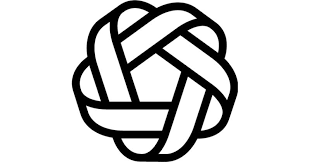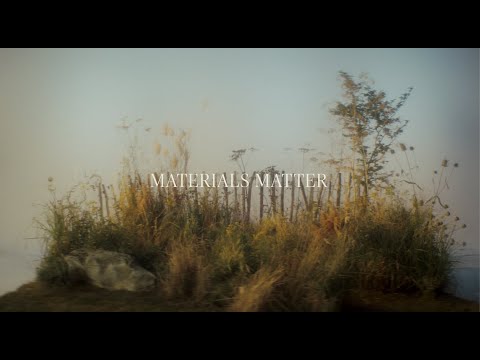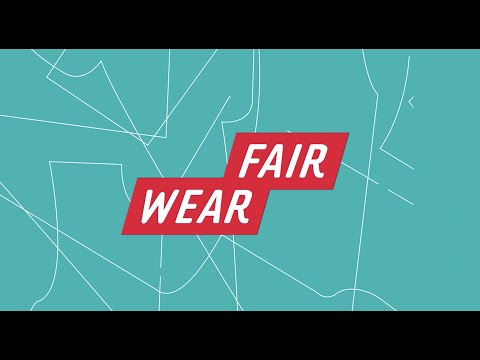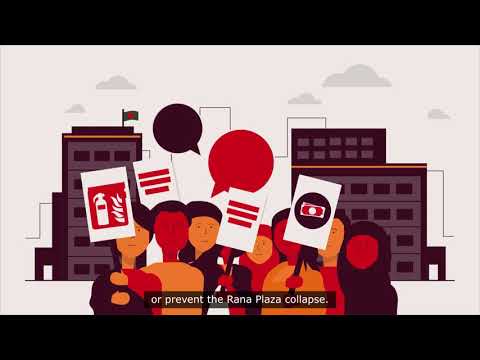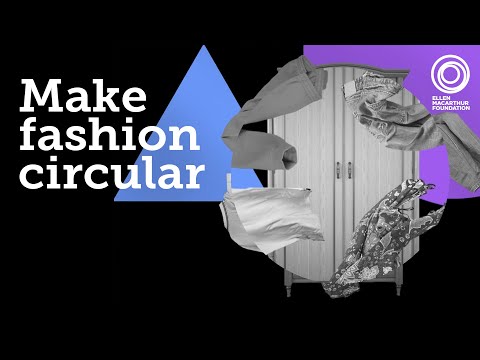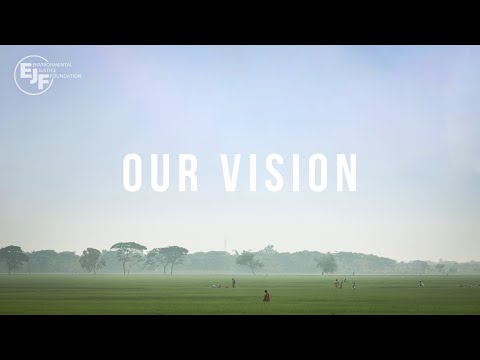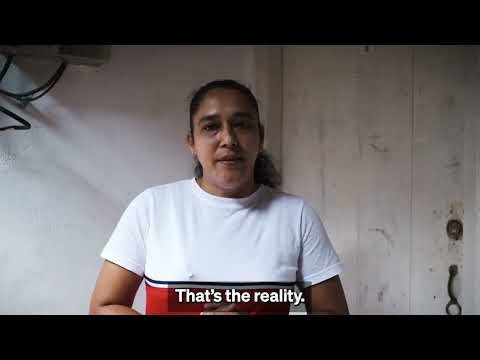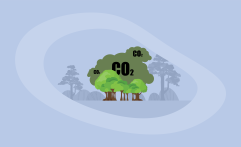14 Best Sustainable Fashion Charities (Complete 2024 List)
Impactful Ninja is reader-supported. When you buy through links on our site, we may earn an affiliate commission.
Learn more
Learn more
.
Hey fellow impactful ninja ? You may have noticed that Impactful Ninja is all about providing helpful information to make a positive impact on the world and society. And that we love to link back to where we found all the information for each of our posts. Most of these links are informational-based for you to check out their primary sources with one click. But some of these links are so-called "affiliate links" to products that we recommend. First and foremost, because we believe that they add value to you. For example, when we wrote a post about the environmental impact of long showers, we came across an EPA recommendation to use WaterSense showerheads. So we linked to where you can find them. Or, for many of our posts, we also link to our favorite books on that topic so that you can get a much more holistic overview than one single blog post could provide. And when there is an affiliate program for these products, we sign up for it. For example, as Amazon Associates, we earn from qualifying purchases. First, and most importantly, we still only recommend products that we believe add value for you. When you buy something through one of our affiliate links, we may earn a small commission - but at no additional costs to you. And when you buy something through a link that is not an affiliate link, we won’t receive any commission but we’ll still be happy to have helped you. When we find products that we believe add value to you and the seller has an affiliate program, we sign up for it. When you buy something through one of our affiliate links, we may earn a small commission (at no extra costs to you). And at this point in time, all money is reinvested in sharing the most helpful content with you. This includes all operating costs for running this site and the content creation itself. You may have noticed by the way Impactful Ninja is operated that money is not the driving factor behind it. It is a passion project of mine and I love to share helpful information with you to make a positive impact on the world and society. However, it's a project in that I invest a lot of time and also quite some money. Eventually, my dream is to one day turn this passion project into my full-time job and provide even more helpful information. But that's still a long time to go. Stay impactful,Affiliate Disclosure
Why do we add these product links?
What do these affiliate links mean for you?
What do these affiliate links mean for us?
What does this mean for me personally?
![]()
Every second, the equivalent of a rubbish truck of clothes is burnt or buried in landfills. The fashion industry is the second-largest industrial polluter, ranking higher than emissions from air travel and maritime transport combined. Moreover, 85% of textile workers earn below the minimum wage and 60% of them are underage. Fortunately, charities worldwide are fighting to rebuild the fashion sector into a responsible and sustainable one, by holding brands accountable. So we had to ask: What are the best sustainable fashion charities?
The best sustainable fashion charities are Textile Exchange, Remake, and Fashion Revolution. Charities like Redress and the Clean Clothes Campaign support a better fashion industry for its workers and consumers alike.
Whether you want to advance garment workers’ rights, help protect the planet and ecosystem against exploitation, or hold fashion brands accountable for their socio-environmental impact, there is a charity for you. Keep reading to learn more about what the best sustainable fashion charities are all about, how they work, and what would be your best way to make a contribution.
Here’s What All the Best Sustainable Fashion Charities Have in Common
The charities on this list were chosen based on their achievements, overall impact, and transparency ratings.
They operate all over the world, from North America to Africa, helping to build a circular fashion system that supports the planet, its people, and its animals.
Most of the charities below work to create a more responsible fashion model that respects its workers throughout their supply chains and protects the ecosystem’s vital resources – water, soil, and air.
The charities interact directly with fashion brands and governments to change policies and reduce fashion waste. Moreover, many of these charities fight for the rights of textile workers, for living wages and safe workplaces, as these aspects catalyze sustainability in the global fashion industry.
Yet, through different means, all the charities share the same goal of making fashion a force for good, ethics, and global suitability.
These Are the 14 Best Sustainable Fashion Charities in 2024
Below are our favorite sustainable fashion charities (you can click on their link to directly jump to their section in this article):
Best Sustainable Fashion Charities
(At the end of this article we’ll also share our six-step approach on how you can select the best charity to support.)
Textile Exchange: Driving Meaningful Change From the Start of the Supply Chain

🔎
Their transparency & ratings:
Textile Exchange has a 4-star rating from Charity Navigator and holds the Gold Seal of Transparency from GuideStar.
“From the clothing we wear to the fabrics in our homes, fashion and textiles touch our lives every day. Our vision is a global fashion and textile industry that gives back more than it takes from our planet.”
Textile Exchange
⚒️
What they do:
Textile Exchange urges the fashion industry to use raw materials from the earth to better support the ecosystem and drive sustainability. They do this through their “Climate+” strategic initiative, to reduce industry’s emissions that come from farming, forests, or fossil fuels by 45% by 2030. The initiative focuses on three key areas of sustainability – soil, biodiversity, and water – which they work to preserve by adopting organic, recycled, or other more responsible materials. Also, their “slow fashion” approach decreases the demand for raw materials and new fossil-based resources, while protecting animal rights in the supply chain.
🚀
What they’ve achieved:
Since their founding, Textile Exchange has continued to help the fashion industry improve its resources’ ethics. For example, they have developed a set of standards to help the industry prove their sustainability claims from raw material to final product. Among them are the Organic Content Standard and the Recycled Claim Standard which help buyers identify better fashion options. Furthermore, in 2021, they certified more than 48,000 sites across 98 countries to their 8 active standards. In the same year, they gathered over 3,300 sustainability and business leaders across 12 round tables and conferences to improve fashion’s impact worldwide.
✨
Ways to contribute:
You can support Textile Exchange by participating in fashion material challenges, attending one of their awareness events, or applying for a job.
Remake: Turning Fashion Into a Force for Good

🔎
Their transparency & ratings:
Remake has a 3-star rating from Charity Navigator.
“We are a global advocacy organization fighting for fair pay and climate justice within the clothing industry.”
Remake
⚒️
What they do:
Remake engages with fashion lovers to initiate the next generation of fashion activists with lectures and workshops. They also provide innovative advocacy trainings and other teaching modules to make consumer habits more sustainable. In this way, the charity builds coalitions with like-minded individuals, businesses, and NGOs to pass policies and campaigns that disrupt current fashion practices. They also pressure fashion brands to commit to paying garment workers higher wages and to reduce the number of clothes. In addition, they fight to increase the quality of products while having less impact on the ecosystem.
🚀
What they’ve achieved:
Since their founding, Remake has engaged with millions of citizens, legislators, and union leaders to connect the fashion industry’s biggest problems with viable solutions. In this way, they have helped recover and give back $22 billion in stolen wages to workers and factories, while raising nearly $160,000 for direct relief for garment employees. Furthermore, they have helped prevent 1.8 million pounds of CO2 emissions from being released into the atmosphere, while also preventing 80,000 lbs of further textile waste. Moreover, they have led 1,500 Remake Ambassadors across 80 countries worldwide, who directly protect workers and improve supply chain practices.
✨
Ways to contribute:
You can donate to Remake via their website. You can also contribute by becoming an ambassador for the charity or participating in their #NoNewClothes challenges.
Fashion Revolution: We Need to Revolutionize Fashion
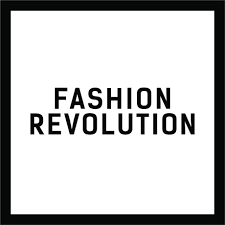
🔎
Their transparency & ratings:
According to their financial report, Fashion Revolution spent 73.9% of their total income on charitable activities and 26.1% on administrative costs.
“We strive to be action-oriented and solution-focused. Rather than making people feel guilty, we help them recognize that they have the power to do something to make positive change.”
Fashion Revolution
⚒️
What they do:
Fashion Revolution influences brands and retailers to change through consumer pressure. They do this by inspiring people to consume less, value quality, and take better care of their clothes, while enabling more visibility and fewer barriers between consumers and producers. For instance, their campaign “Small but Perfectly Formed” helps brands transition to circular and sustainable models of work. In addition, their “#WhoMadeMyFabric?” and “Out of Sight” campaigns urge greater transparency from global fashion brands. They also promote accountability and fairness across the supply chain, with projects like “Good Clothes, Fair Pay”.
🚀
What they’ve achieved:
Since their founding, Fashion Revolution has continued to support a more sustainable and transparent fashion industry. For example, in 2022, their “Good Clothes, Fair Pay” campaign gathered 26,000 signatures from 27 EU countries and 60 international partners to fight for vulnerable garment workers. In the same year, they offered educational grants to 28 small fashion businesses to develop sustainable work strategies. Moreover, they released the seventh edition of the Fashion Transparency Index, where they reviewed and ranked the largest 250 fashion brands and retailers based on their transparency, environmental impact, and supply chains.
✨
Ways to contribute:
You can donate to Fashion Revolution via their website. You can also support them by sharing their digital campaign assets and posters online. In addition, you can get involved in their Fashion Revolution Week.
Redress: Believing in the Positive Power of Fashion
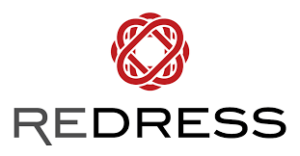
🔎
Their transparency & ratings:
According to their financial report, Redress spent 62.9% of their total income on charitable activities, 34.8% on administrative expenses, and 2.3% on other expenses.
“We aim to raise awareness in Asia about the impact of our clothing choices as well as how to reduce clothing waste.”
Redress
⚒️
What they do:
Redress works to educate emerging fashion designers with courses and educational programs to create sustainable fashion practices through their clothes. They also support designers with sustainable fashion shows and exhibitions while granting Redress Design Awards. In addition, they aid fashion consumers with workshops and the #GetRedressed project to reduce clothing waste, while running pop-up shops to inspire the use of secondhand clothing. They also work with industry stakeholders through recycling initiatives and campaigns across the entire fashion supply chain.
🚀
What they’ve achieved:
Since their founding, Redress has continued to push the boundaries for a more eco-friendly fashion industry across Asia. For example, in 2021, their #GetRedressed campaign engaged 2,500 community members and helped collect 20.5 tons of unwanted clothing from Hong Kong. In the same year, they recycled nearly 50 tons of clothing, while their fashion educators reached 4,000 students through 46 circular fashion activities. Moreover, in 2022, they supported nearly 25,000 people with their educational fashion program and involved almost 3,500 volunteers in their secondhand shops.
✨
Ways to contribute:
You can donate to Redress via their website. You can also support them by donating clothing or by buying from their sustainable fashion partners.
TRAID: Change Your Clothes for Good
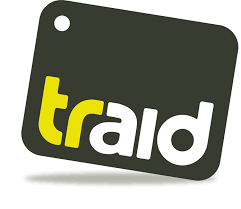
🔎
Their transparency & ratings:
According to their financial report, TRAID spent 100% of their total income on charitable activities.
“We are working to stop clothes from being thrown away through a circular and sustainable approach to the problems of clothes waste.”
TRAID
⚒️
What they do:
TRAID tackles the negative social and environmental impacts of producing and wasting clothes by increasing the use of secondhand clothing. They do this by providing consumers with charity shops and other reuse services to stop them from throwing away wearable clothes. They also run educational programs and the 23% Campaign to raise awareness of the wasteful practices of fast fashion and inspire citizens, businesses and policymakers to take action to keep clothes in use for longer. Furthermore, they fund global projects to create more sustainable fashion production, like organic cotton, and fair conditions for workers in the supply chain.
🚀
What they’ve achieved:
To date, TRAID has raised over $37 million to improve the environmental impact of fast fashion and raise consumer awareness, while saving over 42,000 tons of unwanted clothes from landfills and incineration. They have also committed over $4 million to improve the social impact of the textile industry and the working conditions of over 650,000 garment workers and their children. For example, in 2013, they stopped almost 40,000 CO2 emissions by collecting unwanted clothes and engaged 116,000 students in fashion education and sustainability programs.
✨
Ways to contribute:
You can donate your unwanted clothes to TRAID via their website. You can also support them by joining their team or volunteering in one of their projects.
Fair Wear Foundation: Together, We’re Making Clothing Fair for Everyone
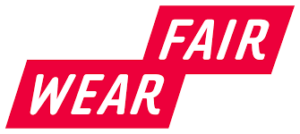
🔎
Their transparency & ratings:
According to their financial report, the Fair Wear Foundation spent 59% of their total income on charitable activities and 41% on organizational costs.
“We know there’s a better way to make clothes. Our mission is to see a world where the garment industry supports workers in realizing their rights to safe, dignified, properly paid employment.”
Fair Wear Foundation
⚒️
What they do:
The Fair Wear Foundation partners with clothing brands, governments, and other stakeholders to make working conditions in the fashion sector more sustainable. For instance, they fight to end gender-based violence, as the majority of garment workers are women who face discrimination and harassment. They also run complaints helplines in major garment-producing countries to offer fair solutions to workers’ issues. Moreover, they interact directly with factories from member brands to ensure they are sustainable and protect their employees’ human rights. They also campaign for living wages for workers and offer them educational programs to minimize workplace risks.
🚀
What they’ve achieved:
Today, the Fair Wear Foundation has a network of 140 member brands committed to improving the lives of garment workers worldwide. In addition, they have developed the Labor Minute Costing Tool and the Fair Price App to support brands in calculating fact-based living wages for their workers. For example, in 2021, they partnered with 16 new brands to help increase sustainability in their supply chains and carried out 67 Brand Performance Checks across 12 countries. In the same year, they organized 272 Workplace Education Programs in 11 garment-producing countries and resolved 95 worker complaints of unfair treatment in the workplace.
✨
Ways to contribute:
You can support the Fair Wear Foundation by following their “wear fair” tips or joining their team. In addition, you can partner your brand with them.
Clean Clothes Campaign: Fashion Change Starts With Collective Action
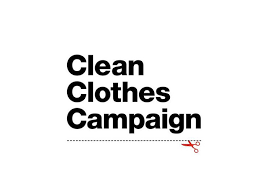
🔎
Their transparency & ratings:
According to their financial report, the Clean Clothes Campaign spent 60% of their total income on charitable activities and 40% on organizational costs.
“Our work is work-centered. We want all people working in the global fashion industry to enjoy and exercise their labor and human rights at work and in their communities”
Clean Clothes Campaign
⚒️
What they do:
The Clean Clothes Campaign unites global organizations with diverse interests, from women’s rights to consumer advocacy and poverty reduction, to improve the lives of fashion industry workers. For example, they pressure fashion brands to implement living wages and risk-safe workplaces for their employees. The charity also militates for secure work contracts and against gender discrimination in the workplace, and supports worker unions as a better way for people to advocate for their rights. In addition, they advance more transparent supply chains and policies that oblige fashion brands to respect their employees’ needs.
🚀
What they’ve achieved:
Today, the Clean Clothes Campaign has a network of 240 organizations operating in over 45 countries. They have also created the Urgent Appeal System to support workers when their rights are violated, which aided more than 450 cases across 40 countries. Moreover, they helped create the Transparency Pledge Coalition to push brands to improve their supply chains. In addition, they helped establish the Accord on Fire and Building Safety that solved 200 worker complaints of safety hazards in the workplace. Also, 160 brands signed their International Accord on Health and Safety and mandated a safer environment for their garment employees.
✨
Ways to contribute:
You can donate to the Clean Clothes Campaign via their website. You can also contribute by signing their awareness campaigns, listening to their podcast, or subscribing to their newsletter.
Ellen MacArthur Foundation: How to Build a Circular Economy

🔎
Their transparency & ratings:
The Ellen MacArthur Foundation has a 4-star rating from Charity Navigator and holds the Silver Seal of Transparency from GuideStar.
“We envision an economic system that’s better for people and the environment.”
Ellen MacArthur Foundation
⚒️
What they do:
The Ellen MacArthur Foundation creates evidence-based research on the benefits of a circular economy and fights for its implementation worldwide, including in the fashion industry. Through this, they engage global changemakers, such as international institutions and governments, to build conditions and eliminate barriers to a circular economy in key sectors. They also offer circular economy courses, shows, and case studies, to support effective policies and promote eco-friendly ways to do business while designing sustainable products.
🚀
What they’ve achieved:
Since their founding, the Ellen MacArthur Foundation has continued to advance sustainable fashion worldwide. For example, in 2016, their research report, “A New Textiles Economy: Redesigning Fashion’s Future” urged a fashion model where fabrics re-enter the economy after use. Furthermore, in 2018, they created the “Make Fashion Circular” project to advance international efforts for a circular economy. The project started a campaign in New York City that built 1,100 clothes-recycling points to save clothes from landfills. Also, in 2019, their “Jeans Redesign” project helped 100 organizations from 25 countries to design more sustainable and ethical jeans.
✨
Ways to contribute:
You can support the Ellen MacArthur Foundation by joining their network of partners, applying for a job, or watching their Circular Economy Show.
Environmental Justice Foundation: Protecting People and Planet
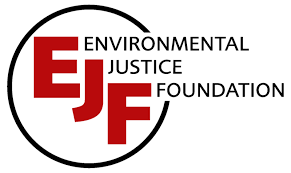
🔎
Their transparency & ratings:
According to their financial report, the Environmental Justice Foundation spent 98% of their total income on charitable activities and 2% on fundraising actions.
“We go to the world’s toughest and most remote countries, to shine a light on the environmental and human rights abuses that too often go under the radar.”
Environmental Justice Foundation
⚒️
What they do:
The Environmental Justice Foundation fights to reduce the human and environmental costs of the fashion industry and cotton production. To achieve this, they create reports and films that expose human rights abuses, pesticide misuse and water shortages caused by fashion production practices. They also urge manufacturers and retailers to develop transparent product labeling and transition to organic cotton production. In addition, they raise consumer awareness of the true impact of the fast fashion industry on the ecosystem.
🚀
What they’ve achieved:
Since their founding, the Environmental Justice Foundation has continued to transform the fashion industry for the good of people and the planet. For example, their film “White Gold: the True Cost of Cotton” has given massive public attention to the use of forced labor in Uzbekistan’s cotton farms and led to the creation of the Uzbek Cotton Pledge, signed by 331 global retailers. Furthermore, their film “Still in the Fields” exposed that, even after the pledge, forced labor was still present, and forced the Uzbek government to cease all state-imposed forced labor.
✨
Ways to contribute:
You can donate to the Environmental Justice Foundation via their website. You can also contribute by volunteering or fundraising. In addition, you can buy their merchandise or sign their awareness petitions.
Collective Fashion Justice: Advancing Fashion by Confronting Injustices Harming Us All
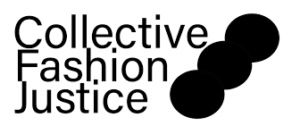
🔎
Their transparency & ratings:
According to their financial report, Collective Fashion Justice spent 82% of their total income on charitable activities and 18% on operating expenses.
“Our mission is to illuminate the interlinked injustices in fashion supply chains that harm the planet, people and our fellow animals. By uprooting their intertwined harm, we work to create a total ethics fashion system.”
Collective Fashion Justice
⚒️
What they do:
Collective Fashion Justice fights to implement a “total ethics fashion”, a term coined by the founder to express intersectional and collective issues within the industry. For this, they collaborate with universities and fashion brands to help create a fashion system that simultaneously protects workers, animals and the planet by using total ethics materials instead of high-impact materials. Furthermore, their reports, like “Under Their Skin” and “Cruelty is Out of Fashion” bring global attention to fashion injustices and threats to the ecosystem.
🚀
What they’ve achieved:
Since their founding, Collective Fashion Justice has continued to demand a holistic view of fashion responsibility and care. For example, in 2021 and 2022, they forced Copenhagen Fashion Week, Melbourne Fashion Week, and the city of Sidney to implement policies that ban the use of fur, skins, or feathers from wild animals. In the same period, their total ethics teachings and manifesto entered as part of school and university curriculums across Australia, to educate the industry’s next generation. Also, they pressured the brand “Dead Pretty” and the retailer “Iconic” to ban the use of wool and decorative feathers.
✨
Ways to contribute:
You can donate to Collective Fashion Justice via their website. In addition, you can contribute by volunteering or participating in their awareness campaigns.
Labour Behind the Label: Changing the Fashion Industry for the Better
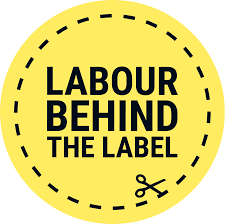
🔎
Their transparency & ratings:
According to their financial report, Labour Behind the Label spent 75% of their total income on direct campaigns, 15% on fundraising, and 10% on organizational costs.
“We believe that no one should live in poverty for the price of a cheap t-shirt. We are committed to making ideals a reality in the garment industry.”
Labour Behind the Label
⚒️
What they do:
Labour Behind the Label improves sustainability and solidarity in the fashion industry by uniting garment workers and consumers. Through this, they support garment workers’ demands for a better workplace and pressure brands to deliver what they claim in their code of conduct and sustainability reports. Furthermore, they fight to implement living wages for fashion brands employees and conduct research to highlight inconsistencies between what brands say and what they actually do. With this, they make the fashion industry more transparent, to help consumers make accountable, conscious fashion choices.
🚀
What they’ve achieved:
Since their founding, Labour Behind the Label has continued to create a more ethical garment industry. For example, in 2021, their 31 activists launched 4 petitions and 6 op-eds that gathered nearly 23,000 signatures, pressuring major brands like H&M and Amazon to improve the treatment of their workers and respect their rights. In the same year, they solved 16 workers’ rights violations from 25 brands across 4 major garment-producing countries. They also called directly onto fashion brands to solve over 200 cases of rights infringements across their factories.
✨
Ways to contribute:
You can donate to Labour Behind the Label via their website. You can also support them by signing their human rights petitions or starting a personal fundraiser.
War on Want: A Fair World is Possible
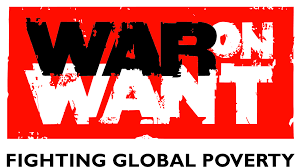
🔎
Their transparency & ratings:
According to their financial report, War on Want spent 80% of their total income on charitable activities and 20% on fundraising actions.
“We believe a better world is possible. We work with partners across the globe to defend human rights, as part of the worldwide movement for justice.”
War on Want
⚒️
What they do:
War on Want works with grassroots movements and workers’ organizations in the Global South to expose injustices and human rights violations in the fashion sector and beyond. They do this by supporting garment-worker groups who are educating and campaigning for change. They also fight to hold abusive fashion brands accountable through global binding agreements that protect workers across the supply chain. In addition, they publish educational reports for citizens, governments and brands, to raise awareness of the harmful practices in fashion factories.
🚀
What they’ve achieved:
Since their inception, War on Want has continued to challenge the unsustainability and injustice of fashion. For example, they have launched a petition urging politicians to support a UN Binding Treaty on Business and Human Rights, to oblige fashion brands to respect their workers’ rights. Moreover, in 2021, their collaboration with worker unions in Sri Lanka pressured brand Next to recognize the union as representative of its workers and engage with them in collective bargaining. In the same year, they organized conferences on garment workers’ rights at the Trades Union Congress, advancing speakers from Sri Lanka and Bangladesh.
✨
Ways to contribute:
You can donate to War on Want via their website. You can also contribute by starting a fundraiser or joining their newsletter.
The Or Foundation: Too Much Clothing, Not Enough Justice
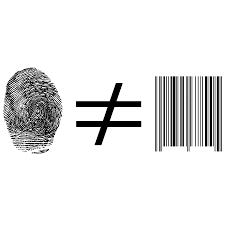
🔎
Their transparency & ratings:
The Or Foundation holds the Gold Seal of Transparency from GuideStar.
“The Or Foundation stands for choice. Choice is agency – agency to escape the socio-economic system of corporate colonialism and to change it from within. Our goal is to catalyze a Justice-Led Circular Economy.”
The Or Foundation
⚒️
What they do:
The Or Foundation fights to grow the movement for secondhand clothing and circularity in the Global North. Through this, they minimize global textile waste and break the exploitative patterns within the secondhand trade. They also conduct research and community education on the environmental and socio-cultural impacts of the fashion waste crisis in the Global South, to find tangible solutions. In addition, their “Stop Waste Colonialism” campaign works to change policies around secondhand fashion markets so that vulnerable people in the Global South can profit from a circular fashion economy.
🚀
What they’ve achieved:
Since their founding, the Or Foundation has stayed committed to supporting an equitable, sustainable fashion trade. For example, in 2021, they collected over 3,000 garments from 400 brands that ended up on the beaches of South Africa. As a result, they called for urgent changes in fashion disposal through their Water Landscape Report. In the same year, they offered $24,000 in direct relief support to 200 retailers of secondhand clothing that were victims of a community fire and gave $4,000 to rebuild three market lanes.
✨
Ways to contribute:
You can donate to the Or Foundation via their website. You can also support them by following their Twitter and Instagram accounts.
Slow Factory Foundation: Redesigning Socially & Environmentally Harmful Systems

🔎
Their transparency & ratings:
According to their financial report, the Slow Factory Foundation spent 100% of their total income on charitable activities.
“At Slow Factory, we believe that we live in a society, not an economy — the economy is an aspect of society, not the other way around. So economic interests should serve society, not vice versa.”
Slow Factory Foundation
⚒️
What they do:
The Slow Factory Foundation runs a free educational series to teach and inspire citizens worldwide to take action on regenerative fashion, like upcycling and sustainable supply chains. They also educate about fashion and beauty politics, focusing on waste, cultural resistance, and prison garment labor. In addition, their “Garment to Garment” program and Design Challenges support designers in building regenerative, highly recyclable clothing. Moreover, they organize open conferences on climate and culture, using fashion as a medium for social and environmental change. Also, they fight to stop fashion-related deforestation in the Amazon rainforest.
🚀
What they’ve achieved:
Since their inception, the Slow Factory Foundation has stayed committed to creating an eco-friendly textile industry. For instance, they funded $700,000 in their online educational series, which has reached 28,000 students across 46 countries worldwide. They have also created more than 100 awareness campaigns and 100 programs that challenged environmentally harmful clothing designs and fashion waste. Furthermore, they invested over $500,000 in their anti-deforestation campaign and other regenerative innovations.
✨
Ways to contribute:
You can donate to the Slow Factory Foundation via their website. You can also contribute by buying their merchandise or reading their Slow Journal.
How Can You Select the Best Charities to Support?
The charities on the list are, we deem, the best sustainable fashion charities. However, you may have a particular charity you want to support. Let’s look at what you can do to ensure your contribution has the most significant impact.
- Check out the charity website. Charities that are worthy of your donations are transparent in their mission and their figures. Familiarize yourself with their history, mission, and values. Their website usually is the best place to start.
- Identify the charity’s mission. Without a goal, the charity is likely to fail. If the charity’s mission isn’t clear, it’s probably worth looking for a charity that does have a clear mission.
- Check if the charity has measurable goals. An effective charity has clear goals. You want to know your donation will help the charity reach its goals. But if it doesn’t have targets, it’s likely to fail or squander your gift. The charity should be able to account for its spending and supply evidence of the work they do.
- Assess the successes or goals the charity has achieved. You wouldn’t invest in a business if it kept missing its targets. In the same way, charities are like this too. If no one is assessing a charity’s progress in reaching its targets, the chances are they’re not making a substantial positive change.
- Check the charity’s financials and stats. Trustworthy organizations will publish financial statements and reports each year. Some might be exempt from having to do so, but they should be able to provide them to public members who are interested in donating.
- Locate sources who work with or benefit from the charity. Word of mouth and first-hand experience of a charity’s work lets you know the charity’s quality. If you’re able to do so, check out the charity for yourself or speak to someone familiar with it. This way, your donation will go to the right place.
How Can You Best Support These Charities?
After you’ve made your decision, it’s time for you to decide on how you’d like to help the charities you’ve chosen. Check how you can help – each charity runs specific programs that have unique aims. Find out what the aim of such programs is and whether they are right for you.
Here are a few ways you can help your chosen charity:
- Donate money. You can find donation pages on the website of most charities. Your donation can be a one-time payment, or you can set it to be deducted regularly at different intervals. You can mostly pay via credit card, but some charities also take PayPal or Bitcoin payments.
- Buy their official merchandise. Charities can also raise money by selling merchandise. So, you can support them by buying the mugs, shirts, caps, pens, pencils, and any other such items they may be selling. Ideally, you should buy as much as you can to share and spread the word about the charity’s activities.
- Engage in volunteer work. As you’ve seen from our descriptions above, some charities engage in a lot of local and grassroots programs. You can help by taking on and organizing the program in your local area.
- Help their fundraising efforts. You can spread the word about the charity in your workplace, school, church, etc., and hold creative fundraising drives on social media or offline within your small circles.
- Share their stories. Most charities have compelling stories that you can share with your audience to attract more people to the cause.
Final Thoughts
Now it is up to you to select the charity that resonates most with you. And whichever charity you end up choosing and contributing to, we are sure that they will immensely appreciate your support. Hopefully, the information within this article has made this selection process a bit easier for you to support charities dedicated to sustainable fasion—based on the causes that matter most to you.
Stay impactful,

PS: Finally, I want to leave you with a thought-provoking TED talk from Dan Pallotta, a leading philanthropic activist and fundraiser, about what is wrong with the way we think about charities – and what we can do about it:
Sources
- Good on You: 14 Hard Facts and Statistics About Fast Fashion and the Industry Behind It
- Earth.org: The 10 Essential Fast Fashion Statistics
- Sizer: The Impact of Fast Fashion on Workers and the Environment
- The Wellness Feed: 11 Dirty Fast Fashion Statistics You’ll Want To Know
- Textile Exchange: Home Page
- Charity Navigator: Textile Exchange
- GuideStar: Textile Exchange
- Textile Exchange: our story
- Textile Exchange: Climate Vision
- Textile Exchange: standards
- Textile Exchange: materials
- Textile Exchange: synthetics
- Textile Exchange: animal fibers
- Textile Exchange: Organic Content Standard
- Textile Exchange: Recycled Claim Standard
- Textile Exchange: 2021 annual report
- Textile Exchange: material challenges
- Textile Exchange: events
- Textile Exchange: careers
- Remake: home page
- Charity Navigator: Remake
- Remake: about us
- Remake: campaigns
- Remake: 2022 impact report
- Remake: donation page
- Remake: become an ambassador
- Remake: 2023 no new clothes challenge
- Fashion Revolution: home page
- Fashion Revolution: Rana Plaza Collapse
- Fashion Revolution: about
- Fashion Revolution: financial report
- Fashion Revolution: “small but perfectly formed” campaign
- Fashion Revolution: “Who made my fabric?” campaign
- Fashion Revolution: Out of Sight: A call for transparency from field to fabric (2021 brand scorecard)
- Fashion Revolution: “good clothes, fair pay” campaign
- Fashion Revolution: 2022 impact report
- Fashion Revolution: donate
- Fashion Revolution: digital assets
- Fashion Revolution: posters
- Fashion Revolution: take action
- Redress: home page
- Redress: financial report
- Redress: redress design award
- Redress: frontline fashion
- Redress: workshops
- Redress: Get Redressed 2022
- Redress: pop-up shops
- Redress: shop secondhand
- Redress: circular fashion course
- Redress: Circular Fashion Education Toolkit
- Redress: take back
- Redress: industry
- Redress: impact report 2021
- Redress: impact report 2022
- Redress: donate
- Redress: partners
- TRAID: home page
- TRAID: financial reports
- TRAID: shop at TRAID
- TRAID: clothes donations
- TRAID: education
- TRAID: 23Percent
- TRAID: vision and mission
- TRAID: TRAID projects
- TRAID: securing Benin’s organic cotton production
- TRAID: impact report 2013
- TRAID: our history
- TRAID: work at TRAID
- TRAID: volunteer
- The Fair Wear Foundation: home page
- The Fair Wear Foundation: annual report 2022
- The Fair Wear Foundation: brands
- The Fair Wear Foundation: our impact
- The Fair Wear Foundation: gender
- The Fair Wear Foundation: complaints
- The Fair Wear Foundation: countries
- The Fair Wear Foundation: living wage
- The Fair Wear Foundation: workplace education
- The Fair Wear Foundation: programmes
- The Fair Wear Foundation: get to know Fair Wear
- The Fair Wear Foundation: tools and benchmarks
- The Fair Wear Foundation: Fair Price App
- The Fair Wear Foundation: annual report 2021
- The Fair Wear Foundation: how to wear fair
- The Fair Wear Foundation: vacancies
- The Fair Wear Foundation: become a member
- The Clean Clothes Campaign: home page
- The Clean Clothes Campaign: annual report 2022
- The Clean Clothes Campaign: network
- The Clean Clothes Campaign: poverty wages
- The Clean Clothes Campaign: unsafe workplaces
- The Clean Clothes Campaign: bad contracts
- The Clean Clothes Campaign: gender discrimination
- The Clean Clothes Campaign: union busting
- The Clean Clothes Campaign: unclear supply chains
- The Clean Clothes Campaign: voluntary agreements
- Urgent Appeal System
- The Clean Clothes Campaign: urgent appeal
- Transparency pledge Coalition: home page
- Bangladesh Accord: home page
- Wikipedia: Accord on Fire and Building Safety in Bangladesh
- The Clean Clothes Campaign: annual report 2021
- The Clean Clothes Campaign: International Accord on Health and Safety
- The Clean Clothes Campaign: donation
- The Clean Clothes Campaign: action
- The Clean Clothes Campaign: podcast
- The Clean Clothes Campaign: newsletter
- The Ellen MacArthur Foundation: home page
- Charity Navigator: The Ellen MacArthur Foundation
- GuideStar: The Ellen MacArthur Foundation
- The Ellen MacArthur Foundation: network
- The Ellen MacArthur Foundation: circular economy introduction
- The Ellen MacArthur Foundation: what we do
- The Ellen MacArthur Foundation: how we work
- The Ellen MacArthur Foundation: circular economy courses
- The Ellen MacArthur Foundation: circular economy show
- The Ellen MacArthur Foundation: tools and methods
- The Ellen MacArthur Foundation: A New Textiles Economy: Redesigning fashion’s future
- The Ellen MacArthur Foundation: Make Fashion Circular
- The Ellen MacArthur Foundation: Jean Redesign
- The Ellen MacArthur Foundation: join our community
- The Ellen MacArthur Foundation: careers
- The Environmental Justice Foundation: home page
- The Environmental Justice Foundation: financial accounts
- The Environmental Justice Foundation: sustainable fashion
- The Environmental Justice Foundation: somebody knows
- The Environmental Justice Foundation: White Gold – the true cost of cotton
- The Environmental Justice Foundation: the children behind our cotton
- The Environmental Justice Foundation: the true costs of cotton
- The Environmental Justice Foundation: sustainable fashion
- The Environmental Justice Foundation: the future of fashion
- The Environmental Justice Foundation: Uzbek Cotton Pledge
- The Environmental Justice Foundation: uncovering exploitation in Uzbekistan
- The Environmental Justice Foundation: Still in the Fields
- The Environmental Justice Foundation: donate
- The Environmental Justice Foundation: volunteer
- The Environmental Justice Foundation: fundraise
- The Environmental Justice Foundation: merchandise
- The Environmental Justice Foundation: sign a petition
- Collective Fashion Justice: home page
- Collective Fashion Justice: financial reports
- Collective Fashion Justice: total ethics fashion
- Collective Fashion Justice: university engagement
- Collective Fashion Justice: industry consultancy
- Collective Fashion Justice: humans
- Collective Fashion Justice: non-humans
- Collective Fashion Justice: planet
- Collective Fashion Justice: total ethics materials
- Collective Fashion Justice: materials to avoid
- Collective Fashion Justice: Under their skin
- Collective Fashion Justice: cruelty is out of fashion
- Collective Fashion Justice: our wins
- Collective Fashion Justice: total ethics fashion book
- Collective Fashion Justice: manifesto
- Collective Fashion Justice: donate
- Collective Fashion Justice: support us
- Labour Behind the Label: home page
- Labour Behind the Label: who we are
- Labour Behind the Label: impact report 2021
- Labour Behind the Label: living wage
- Labour Behind the Label: transparency
- Labour Behind the Label: donate
- Labour Behind the Label: take action
- Labour Behind the Label: fundraise for us
- War on Want: home page
- War on Want: annual report 2021
- War on Want: poverty and politics
- War on Want: garment workers
- War on Want: about
- War on Want: fashioning future
- War on Want: our work
- War on Want: Ask your MP to support a UN Binding Treaty on Business and Human Rights
- War on Want: donate
- War on Want: fundraise for us
- War on Want: newsletter
- The Or Foundation: home page
- GuideStar: The Or Foundation
- The Or Foundation: work
- The Or Foundation: 2021 annual report
- The Or Foundation: Waste Makes Visible Our Separation from Nature
- The Or Foundation: A “Waste Landscape” Report by The Or Foundation
- The Or Foundation: Kantamanto Christmas Fire Relief Fund Report
- The Or Foundation: donate
- The Or Foundation: Twitter account
- The Or Foundation: Instagram account
- The Slow Factory Foundation: home page
- The Slow Factory Foundation: 2019 financial form
- The Slow Factory Foundation: Open Edu
- The Slow Factory Foundation: regenerative business and economy
- The Slow Factory Foundation: upcycling workshop
- The Slow Factory Foundation: racism in supply chains
- The Slow Factory Foundation: fashion and beauty politics
- The Slow Factory Foundation: fashion and waste
- The Slow Factory Foundation: fashion and resistance
- The Slow Factory Foundation: fashion and prison labor
- The Slow Factory Foundation: garment to garment
- The Slow Factory Foundation: design challenge
- The Slow Factory Foundation: study hall
- The Slow Factory Foundation: Stop Fashion-Related Deforestation in the Amazon
- The Slow Factory Foundation: impact report 2012-2022
- The Slow Factory Foundation: donate
- The Slow Factory Foundation: merchandise
- The Slow Factory Foundation: slow journal
